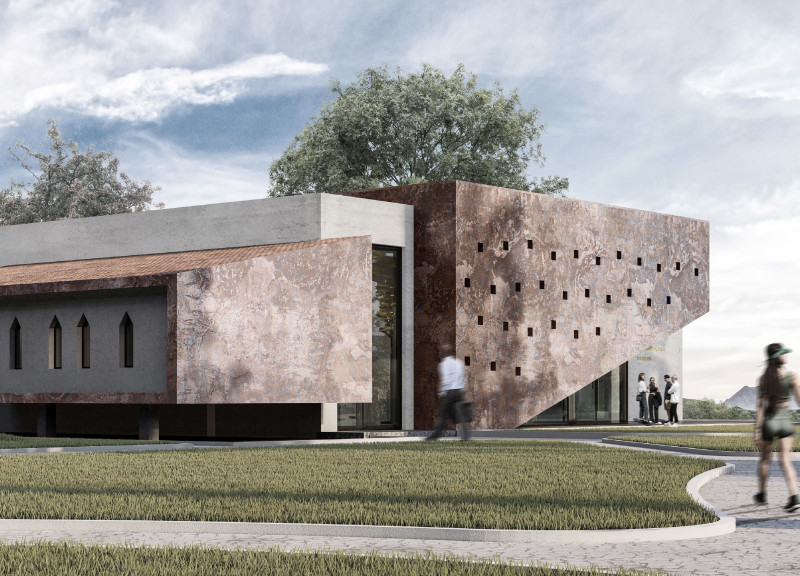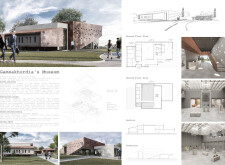5 key facts about this project
## Gamsakhurdia's Museum Overview
Gamsakhurdia's Museum is situated in Georgia, a region rich in cultural heritage, dedicated to honoring the contributions of Konstantine Gamsakhurdia and his son, David, in shaping the nation’s literary and historical narrative. The museum's design merges contemporary architecture with traditional Georgian elements, establishing a spatial and cultural dialogue that enhances the visitor experience while promoting educational engagement within the community.
## Site Context and Spatial Organization
This museum reflects Georgia's unique position at the crossroads of Europe and Asia, celebrating local traditions while embracing modern interpretations. The design prioritizes visitor interaction through a well-considered spatial layout. The ground floor features an expansive entry hall that leads to exhibition spaces showcasing both temporary and permanent collections. Additionally, amenities such as a café and bookshop support informal gatherings, creating an inviting atmosphere. The second level houses a versatile main exhibition area and dedicated spaces for workshops and community events, encouraging public participation in cultural discussions.
## Materiality and Sustainability
The building’s form exemplifies geometric simplicity, employing a façade crafted from exposed concrete, textured brick, and steel to create a visually engaging aesthetic with a strong sense of place. The use of local materials not only highlights regional craftsmanship but also emphasizes sustainability by minimizing environmental impact. Large glass surfaces facilitate natural lighting, reducing energy consumption and promoting a brighter, more welcoming interior while the interplay of textures fosters an enriching spatial experience throughout the museum.



















































